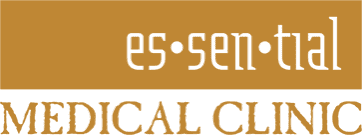A risk is a probability that an event will occur. A person’s risk of getting cancer is most often described when discussing some type of cancer and family history. This term also describes the chance that cancer will come back.
The health of many people improves with the help of researchers and doctors who analyze the potential risks of cancer. Understanding the risks associated with smoking is one such example. Lung cancer is associated with smoking, and as a result of this knowledge, a worldwide campaign against this bad habit was launched.
Anything that increases a person’s risk of cancer is a risk factor. Cancer is not directly caused by most risk factors. Despite having several risk factors, some people never develop cancer. There are also those who go through less known or unknown risk factors.
Your healthcare team should know and discuss your risk factors. Only then can you make healthier lifestyle choices. You can also use this information to determine if you need genetic counseling and testing.
Cancer is generally associated with these risk factors:

- Be of age
- Having a personal or family history of cancer
- have the habit of smoking
- suffering from obesity
- Excessive drinking
- Viruses such as the human papillomavirus (HPV)
- Exposure to specific chemicals and radiation (including from the sun)
Stopping these risky behaviors can help you avoid risk factors. Being overweight, using tobacco and alcohol, and having multiple sunburns are some examples. Being older is an unavoidable risk factor, but you can learn about certain risk factors for cancer and how to move toward a healthier lifestyle.
Cancer risk factors
Your doctor can determine if you might benefit from the following treatments based on your cancer risk:
- A cancer screening test, such as a mammogram or colonoscopy.
- Earlier and more frequent screening tests than routine evaluations
- Surgery or medication to reduce the risk of cancer
The risk of breast cancer is at least doubled for women whose mothers had the disease. Breast cancer has a strong family history or genetic mutations in some women. They may choose to have their breasts removed to prevent cancer, as they are at very high risk of breast cancer. It appears that this surgery reduces the risk of breast cancer by at least 95%. These women may also be prescribed drugs for breast cancer.
In cases of cancer in the family, it is advisable to do genetic testing. You can discuss genetic testing with your doctor or genetic counselor. Based on your family history and other risk factors, you can determine your percentage risk of cancer.
Identification of absolute and relative risks

When assessing whether a person’s risk is higher or lower than that of the general population or a particular group of people, doctors use absolute risk and relative risk.
Absolute risk is the probability that a person will develop a disease during a given period of time. This statistic determines the risk of the general population.
Based on this, it must be considered that one in 8 women (12.5%) will develop breast cancer during her lifetime. However, the absolute risk of breast cancer cannot indicate whether older women are at greater risk than younger women, for example.
Thus, two groups of people are compared according to their relative risk of contracting a disease. Comparisons are made between groups with different risk factors. This helps to focus attention and preventive care on people who really need it or will need it at a certain point in their lives.
Lifestyle changes or cancer screening tests may be guided by measures of risk. Also, it is important to understand what is absolute risk and what is relative risk.
With a proper method, a person’s relative risk of cancer is identified by 100%. For a fuller picture, consider the absolute risk. Make sure you find the absolute risk by comparing the research in the news with your own. Relative risks are reported in most research studies. Taking this approach can lead to an overestimation of risk.
What contributes to the risk factors
Despite doctors’ knowledge of what can increase your cancer risk, most cases occur in people who are unaware of these factors. You are more likely to develop cancer if you have the following factors:
An advanced age
The development of cancer can take decades. That’s why most cancer patients are 65 or older. Although cancer is more prevalent in older adults, it is not a disease exclusive to them. You must take care of yourself throughout your life.
Your (bad) habits
Cancer risks are associated with certain lifestyle choices. Causes of cancer include smoking, drinking more than one drink a day for women and two drinks a day for men, excessive sun exposure, blistering sunburn, obesity, and unprotected sex.
Some habits are easier to change than others, but you can change them to reduce your risk of cancer.
The history of your family

It is estimated that a small percentage of cancers are caused by hereditary conditions. Mutations can be passed down from generation to generation if cancer runs in your family.
Genetic testing may be needed to determine if you have mutations that increase your risk of cancer. You won’t necessarily get cancer if you have an inherited gene mutation, but you should be vigilant if you do.
The state of your health
Cancer risks are markedly increased by certain chronic health conditions, including ulcerative colitis. You should discuss these risks with your doctor and aim for a better state of health.
you and your environment
You may be exposed to harmful chemicals in the environment that can increase your risk of cancer. You may inhale secondhand smoke even if you don’t smoke.
There is also an increased risk of cancer associated with chemicals in your home or workplace, such as asbestos and benzene.
Complications
There are several complications associated with cancer and its treatment, including:
Pain. Cancer or cancer treatment can cause pain, but not all cancers cause pain. Cancer pain can be effectively treated with medications and other approaches.
Fatigue. Cancer patients often experience fatigue due to a variety of causes, often controllable. During chemotherapy or radiotherapy treatments, fatigue is common, but it usually goes away after a few days.
Labored breathing. Difficulty breathing can be caused by cancer or cancer treatment. There may be relief through treatments.
Nausea. Cancer and cancer treatments can cause nausea in some patients. Sometimes your doctor may predict whether or not your treatment will cause nausea. You may be able to reduce or prevent nausea with other treatments.
Diarrhea or constipation. You may experience diarrhea or constipation as a result of cancer or cancer treatment.
major complications
Weightloss. A cancer diagnosis or cancer treatment can lead to weight loss. Normal cells are deprived of nutrients when cancer robs them of food. It is difficult to treat. The use of artificial nutrition through tubes in the stomach or into a vein does not usually alter the weight loss process.
Chemical changes in your body. As a result of cancer, your body’s chemical balance may be upset and you may experience serious complications. You may experience excessive thirst, frequent urination, constipation, and confusion if you have a chemical imbalance.
Brain and nervous system problems. Cancer’s pressure on nearby nerves can cause pain and loss of function in a part of the body. Brain cancer can cause headaches and symptoms similar to those of a stroke, such as weakness on one side of the body.
A cancer-related immune response that is unusual. Sometimes the immune system attacks healthy cells in response to cancer. These very rare reactions can cause difficulty walking and seizures.
Cancer that spreads. Cancer may metastasize to other parts of the body as it progresses. The type of cancer determines where it spreads.
Cancer coming back Cancer recurrence is a risk for cancer survivors. Reduce this risk of recurrence by talking with your doctor to design a follow-up plan. In the months and even years after your treatment, you may have regular scans and exams to detect cancer recurrence.
Prevention
Doctors have identified several ways to reduce the risk of cancer, including:

- Give up smoking. If you smoke, quit. If you don’t smoke, don’t start. It’s not just related to lung cancer, so quit as soon as you can to lower your risk of cancer in the future.
- Avoid excessive sun exposure. Skin cancer is caused by the sun’s harmful ultraviolet (UV) rays. When staying in the shade, wear protective clothing or apply sunscreen.
- Maintain a healthy diet. Fruits and vegetables should be part of your diet. Lean proteins and whole grains are the best options. Limit your consumption of processed meats.
- You should exercise every week. The risk of cancer is lower when you exercise regularly. Most days of the week, try to exercise for at least 30 minutes.
- Maintain a healthy weight. Cancer risks may increase if you are overweight or obese. Combine a healthy diet with regular exercise to stay in shape.
- Drink in moderation. Moderation is the key to drinking alcohol.
- Get screened for cancer. Depending on your risk factors, talk to your doctor about cancer screening.
- Get immunized with your doctor. Cancer is more likely to occur if you are infected with certain viruses. In cases like hepatitis B and HPV, vaccines can help prevent these viruses. Ask your doctor about immunization.
Did you review the risk factors for cancer? Keep reading with us:


